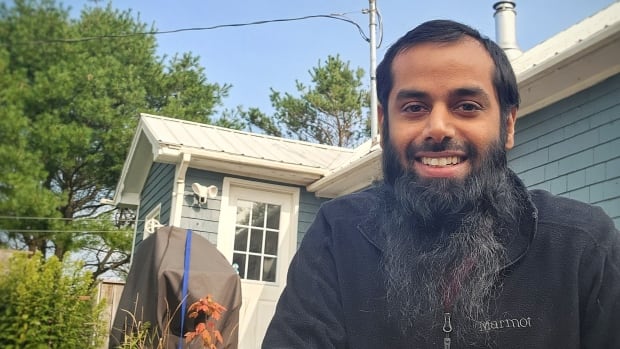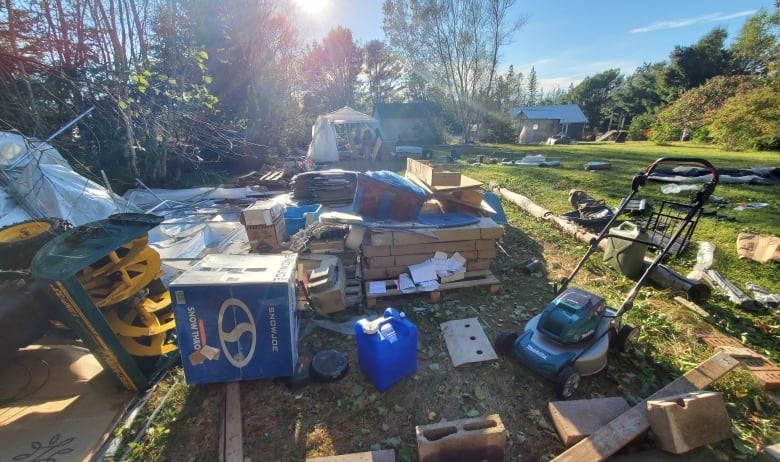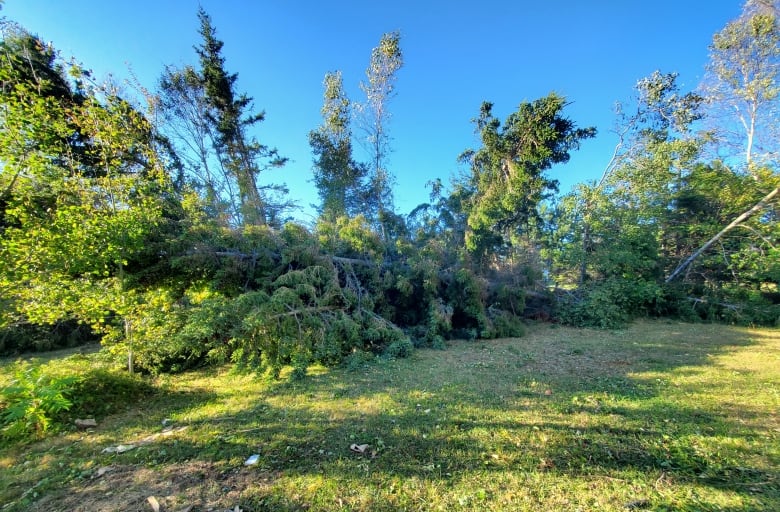
This is a First Person column by Omair Imtiaz, who lives in Prince Edward Island. For more information about CBC’s First Person stories, please see the FAQ.
As I stood amidst the wreckage that Hurricane Fiona had left in its wake, I was overwhelmed by the loss and devastation that surrounded me.
Obliterated by the wind, our sturdy fence had toppled and one of our sheds lay in the hedge. Another shed’s metal roof was torn off in a section like a piece of paper and a third shed lost a piece of sheathing right off the side. Downspouts were strewn across the yard. About 30 large and small trees came down on our one-acre lot.
In 2007, I moved to Canada from Dubai. In my 19 years in the Middle East, I experienced only a handful of sandstorms. They are relentless and suffocating — getting caught in their gritty fury leaves you struggling to see and to breathe. Sand is everywhere and in everything. None of this, however, came close to the fury unleashed by post-tropical storm Fiona. The destruction was beyond my imagination — as if a giant’s temper had torn through our peaceful haven. Once solid structures were ripped apart and trees that stood tall for decades lay scattered like matchsticks.
My three-year-old daughter’s favourite play set and her slides were crushed beneath the falling trees. Luckily, the storm spared the main house and a shed that my wife had renovated into a home office and cool living space for $15,000 right before Fiona blew through the Island. We were fortunate to be able to sleep in our home the night after the storm. We feel blessed as we know people who have a full year later still been unable to return to living in their homes.
Embracing change
The emotional toll of losing cherished belongings and seeing the extent of nature’s fury left me light-headed. The ground beneath me was unstable. I wanted to ignore what I had just witnessed as I turned my focus to managing a household with no electricity. For the next nine days, we used a combination of solar generators, plug-in generators and coolers to keep our food from getting spoiled. The community came together, armed with chainsaws and determination. Our neighbours lent us a hand to clear debris and we also helped them carve single-lane pathways on the roads that were completely blocked by trees.

But once we got past the clean-up and initial crisis, the question that lingered in my mind was a simple yet profound one: Could I rebuild my home in a way that could stand strong against the next inevitable storm?
The thought of returning to Dubai never crossed my mind. P.E.I. is more than just a place — it is home, a part of my being. The Maritimes has become my refuge, my community and my extended family. The Island’s spirit of resilience became my own, shaping my determination to weather any challenge that lay ahead.
So, when I pick up the hammer for any project around our home, every nail, every board and every plan is infused with this determination. It’s not just about repairing structures; it is about crafting a defence against the uncertainty that climate change has thrust upon us. We doubled the number of nails and screws used in our repairs, anchored any outdoor structure to the ground using heavy-duty ratchet straps, ensured proper drainage so the water slopes away from the house, and last but not least, made a family emergency plan. We plan to eventually replant the dozens of trees along the hedge grove that we lost in the storm. I hope it will become a home to the little critters and birds that used to frequent our yard.

I’ve realized this journey isn’t just about structures or even about weathering record storms; it’s about embracing change and finding strength within ourselves. The storm that once shook our family to our core also awakened a profound sense of purpose to rebuild not just physically, but emotionally and mentally as well. When I drive around my neighbourhood, I see not just the scars left by Fiona, but also the stories of resilience, community and hope that binds us together in the face of an ever-changing world.
Do you have a compelling personal story that can bring understanding or help others? We want to hear from you. Here’s more info on how to pitch to us.

